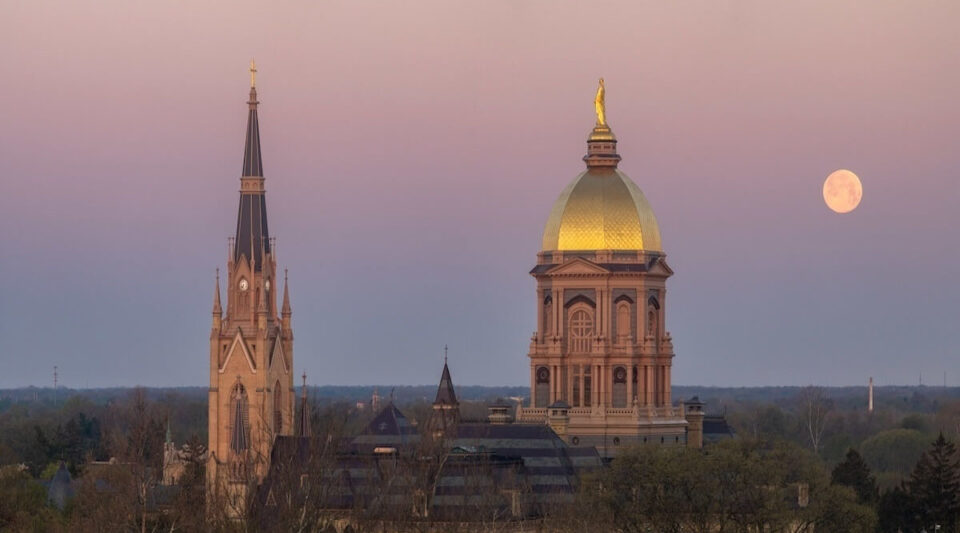The University of Notre Dame has been inducted into the Universities Space Research Association (USRA). Founded in 1969 under the auspices of the National Academy of Sciences at the request of the U.S. Government, the USRA is a nonprofit corporation chartered to advance space-related science, technology, and engineering. The USRA consists of 120 universities that work together to advance space-related education, research, development, and operations around the world.
To be eligible for USRA membership, a university must demonstrate “significant contributions in space- or aeronautics-related research by faculty and a substantial commitment to a course of studies and dissertation research leading to the doctorate in one or more related fields.”
The USRA cited Notre Dame’s “active research programs in Physics, Astronomy, Aerospace and Mechanical Engineering, and Earth Sciences.” It also noted that research at the University “is built around a robust framework of strong interdisciplinary and collaborative activities both within in-house departments and with other renowned national and international institutes.”
Clive Neal, a professor in the Department of Civil and Environmental Engineering and Earth Sciences (CEEES), called the University’s USRA membership “an important recognition of Notre Dame’s deep involvement in space activities.”
Neal, who has been conducting lunar research at Notre Dame for over 30 years, explained that Notre Dame’s involvement with USRA will bring benefits for researchers interested in conducting research in space as well as for those who are interested in helping to advance space exploration.
“Utilizing the space environment to conduct experiments has been revolutionary,” Neal said, “It has led to new materials and new pharmaceuticals. And now, as we understand and document useful resources on different planetary bodies, it is crucial that we understand how to utilize those resources in a very different environment from what we are used to on this planet.”
The University’s recent space-related research includes an effort by Neal’s lab to perform the first-ever analysis of samples collected in 1972 from the surface of the Moon in vacuum tubes by Apollo 17 astronauts.
Additionally, Tengfei Luo, the Dorini Family Professor for Energy Studies, used the microgravity environment aboard the International Space Station (ISS) to gain a better understanding of the competing physical forces involved in the dynamics of bubbles. In another experiment aboard the ISS, Meenal Datta, an assistant professor in the Department of Aerospace and Mechanical Engineering, explored how the microgravity environment affects the development of organoids that could lead to more efficient and effective models for cancer research.
Jeffrey F. Rhoads, vice president for research and professor in the Department of Aerospace and Mechanical Engineering, said, “Space is an exciting new frontier for making research breakthroughs not possible on Earth. We are grateful to the USRA for recognizing the distinctive contribution Notre Dame can make to these efforts.”
Rhoads added, “It is particularly inspiring to see the ways Notre Dame researchers are looking to space to advance human health on Earth—whether by improving disease detection, creating more realistic disease models, or by developing new and better therapeutics in space.”
To learn more about the USRA, visit www.usra.edu.
— Brett Beasley, Writer and Editorial Program Manager, Notre Dame Research
